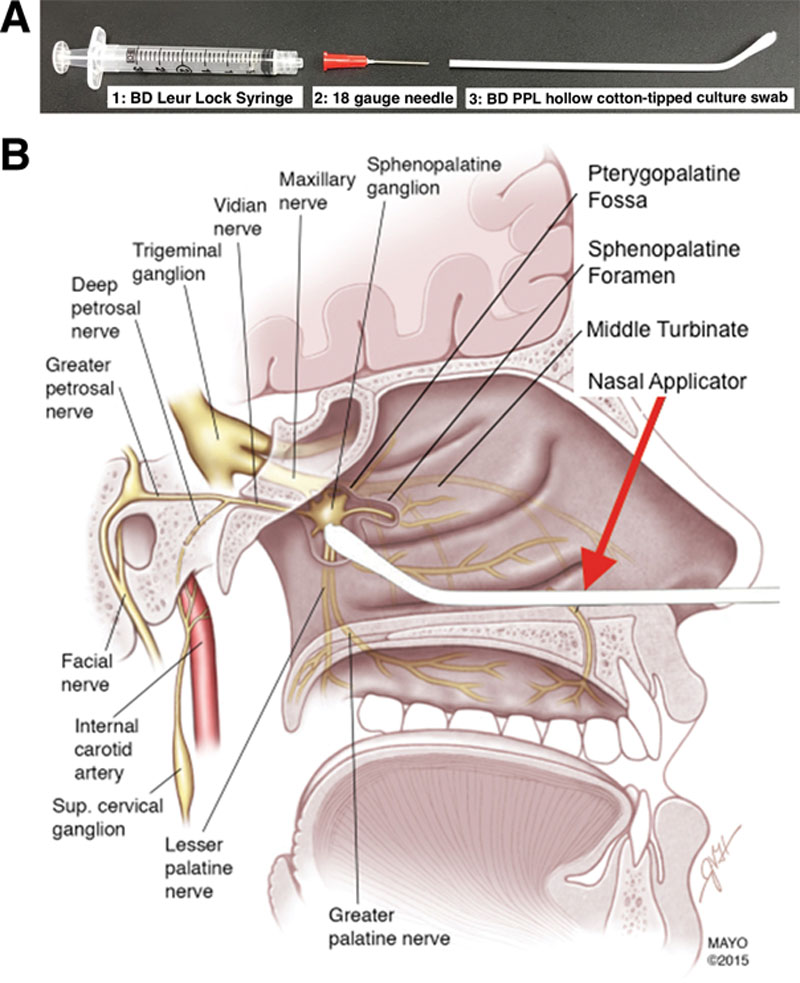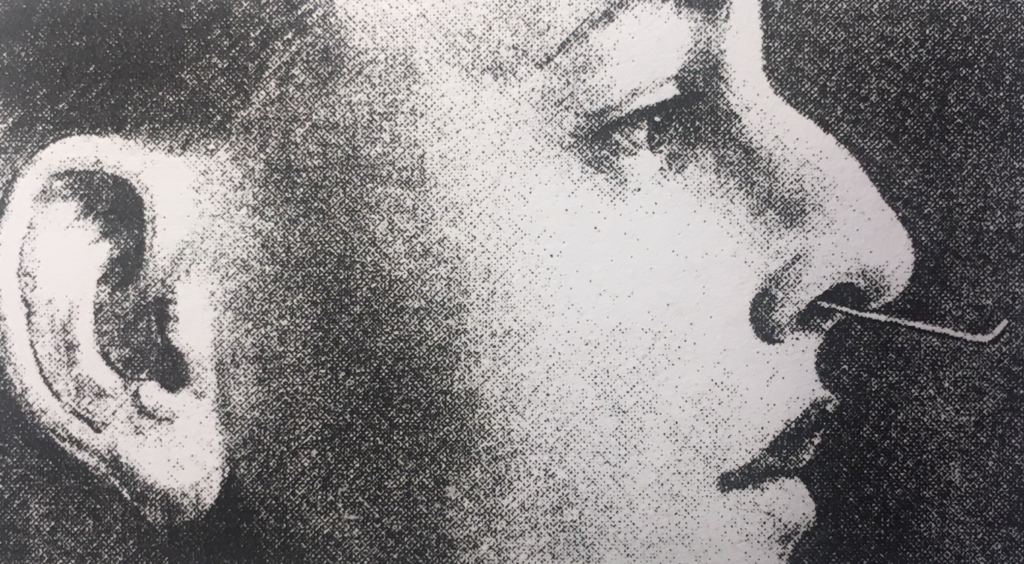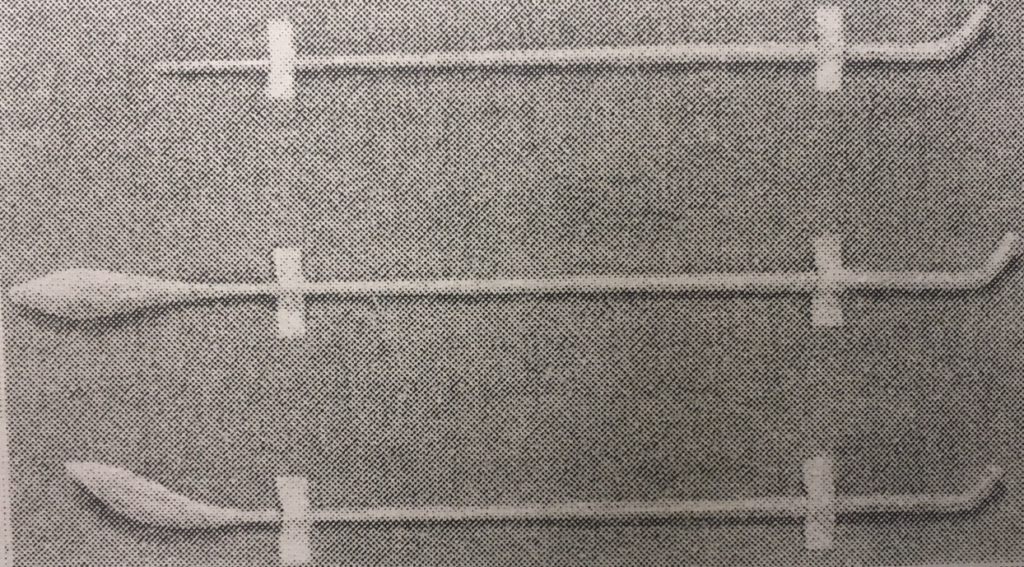The Sphenopalatine Ganglion Block was first described in 1908 by Sluder and was used to treat Sphenopalatine Ganglion Neuralgia or Sluder’s Neuralgia. Today, it is believed that he may have been describing cluster headaches or another trigeminal neuralgia, TMJ disorder (TMD) or various neurologic conditions.
Treatment of chronic pain by blocking or using neuromodulation of the Sphenopalatine Ganglion is an exciting “NEW” therapy. This article published in Anesthesiology in 2018 describes a new method of doing an SPG Block. This includes two pictures from that article. There are also 2 pictures from a 1930 article published in Annals of Internal Medicine (JAMA).
This site has many blog posts on amazing relief with SPG Blocks for multiple disorders including Chronic Headache, Cluster Headaches, Migraine, Anxiety, PTSD, Facial pain, OroFacial Pain, Sinusitis, and a wide range of medical disorders. Notably it is effective on eliminating about 1/3 of Essential Hypertension.
A new article in Anesthesiology V28 NO 2018 describes a “New” Modified Cotton Swab Applicator for Nasal Sphenopalatine Ganglion Nerve Block.
This “new” technique is similar to a procedure describes by Dr Hiram Byrd in a 1930 article “Sphenopalatine Phenomena” that was published in the “Annals of Internal Medicine” now known as “JAMA” or the Journal of the American Medical Association
Sphenopalatine Ganglion Blocks are an excellent example of “Forgotten Medicine” where extremely valuable medical techniques and therapies are lost due to the currentpolypharmacy approach to medicine.
The two pictures above were published this year, 2018 in Anesthesiology. The Bottom two pictures were from the 1930 Byrd article in Annals of Internal Medicine. That article looked at the incredible safety and efficacy of Sphenopalatine Ganglion Blocks in treating a wide variety of pain and dysfunction. There were actually 10,00 Sphenopalatine Ganglion Blocks in 2000 patients reviewed for the paper.
When one reads Hiram Byrd’s paper and then considers the fact that this amazing technique was becoming part of the “Forgotten Medicine” dilemma where tried and true techniques are gradually lost to new therapies. These new therapies often do not stand the test of time or have long term negative side effects.
Comparing the pictures you will note the similarities in the approach. This article proposes using their technique instead of commercial devices including Sphenocath, Allevio and TX360.
I utilize a combination of these old and new techniques. The cotton-tipped nasal catheter I utilize looks very similar to the 1930 photos after modification. Unlike the 1930 procedure that delivered a single application of anesthetic, usually 10% cocaine back in 1930 I currently utilize a continual capillary feed of anesthetic, most commonly 2% Lidocaine. Patients are taught to Self-Administer the SPG blocks trans-nasally as need to turn off and acute episode of pain or dysfunction but also to use as a prophylactic to prevent issues from arising. This is a patient friendly and cost effective method of eliminating pain.
The following is a video of a physician who experienced an SPG Block as a youngster and was so impressed with the results he eventually became a physician. Unfortunately, he was never taught about the block and was unable to offer the miraculous results to his patients that he had experienced. He left medicine because of this and became a very talented artist. This video was taken on the day he found out that the treatment he had as a boy was a Sphenopalatine Ganglion Block. He never learned or was taught this procedure in medical school or in residency.


